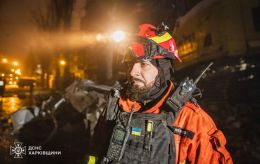US ramps up military training for possible combat operations in Arctic
 Illustrative photo (Getty Images)
Illustrative photo (Getty Images)
In recent years, the United States has been ramping up its preparations for dominance in the Arctic. This move reflects growing concerns over the actions of Russia and China, both of whom seek to expand their access to the Arctic for trade, resources, and projecting power into this strategic region, according to Business Insider.
The US is entering a new era of heightened strategic rivalry in the Arctic, and the more adversaries operate in the region, the greater the likelihood of conflict.
Back in 2021, the US military published its new strategy aimed at restoring Arctic dominance, leading to a reorganization of its forces and priorities in Alaska.
The strategy highlighted how rapidly melting sea ice around the Arctic Circle, where warming occurs twice as fast as the rest of the world, opens up new opportunities for natural resource extraction, shipping routes, and commercial fishing, resulting in increased Arctic navigation. With ice melting, access to the region expands, heightening its unpredictability.
While the US has long paid special attention to its military presence in Alaska and its ability to project force into the Arctic since World War II, the peak of this attention came during the Cold War era. After the collapse of the Soviet Union and the subsequent focus on counterinsurgency warfare in the Middle East, the military was consumed with other priorities, leading to a deterioration of its Arctic capabilities.
Now, the military hopes to rebuild its "Arctic muscles" that have atrophied over the past 20 years. Part of this process involves increasing military presence in the region to strengthen ties with allies such as Canada and Denmark. It also entails using this presence to deter Russia and China.
Given China's growing presence in the region and Russia's increasing ambitions, military leaders argue that the US must adapt, just as their adversaries have. The US is reinvesting in its cold-weather capabilities, focusing on increasing presence and capabilities sufficient for effective conflict deterrence, and training for combat operations in unpredictable conditions should deterrence fail.
All land, internal waters, territorial seas, and the Exclusive Economic Zone in the Arctic are under the jurisdiction of one of the eight Arctic coastal states: Canada, Denmark (through Greenland), Finland, Iceland, Norway, Russia, Sweden, and the United States. International law regulates this area, as it does other parts of the Earth.

